Abstract
This article describes experiments indicating a change in pathogenicity for laboratory animals of the Flury strain of rabies virus at high egg passages. Factors such as dilution of virus, number of egg passages, age of animals, and route of inoculation are taken into account. The results of the author's investigations indicate that living chick-embryo-adapted virus can be used both as a vaccine administered before exposure to rabies virus, and as an adjunct to antiserum in the protective treatment of animals after exposure.
Full text
PDF
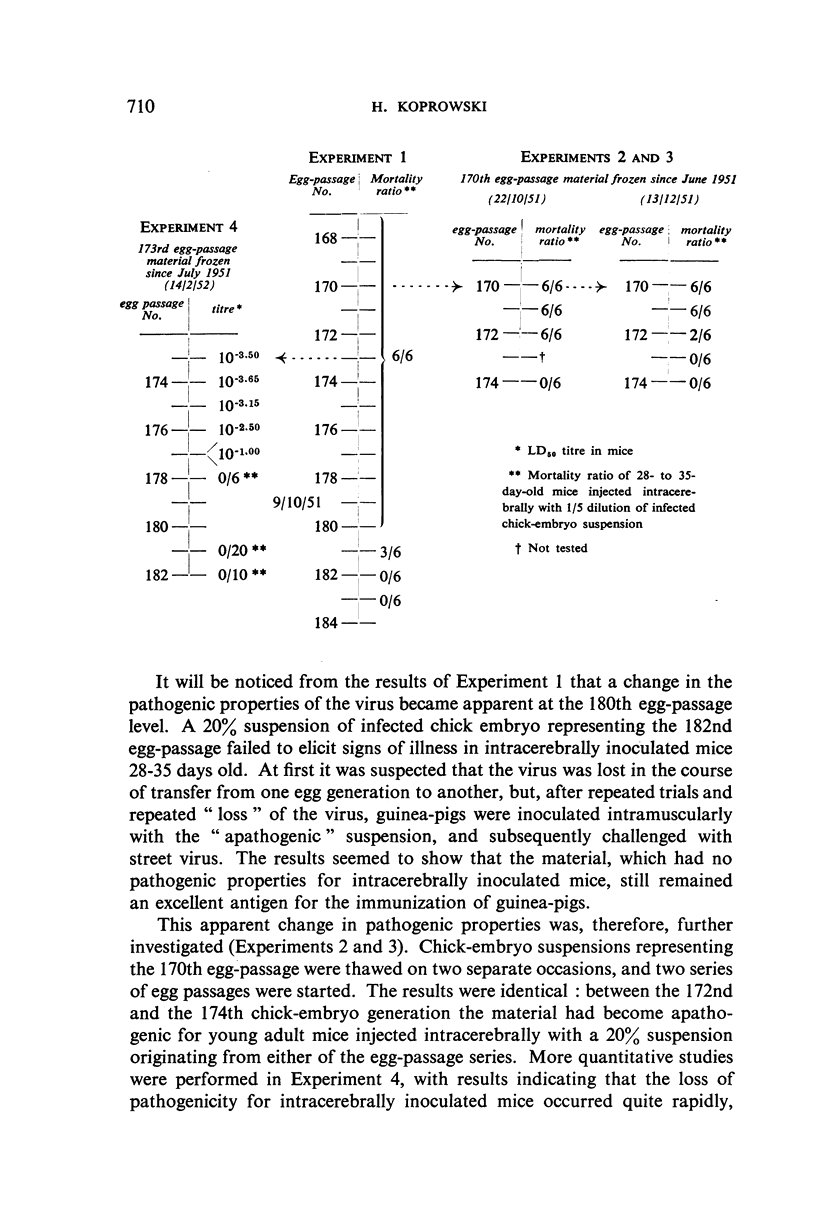
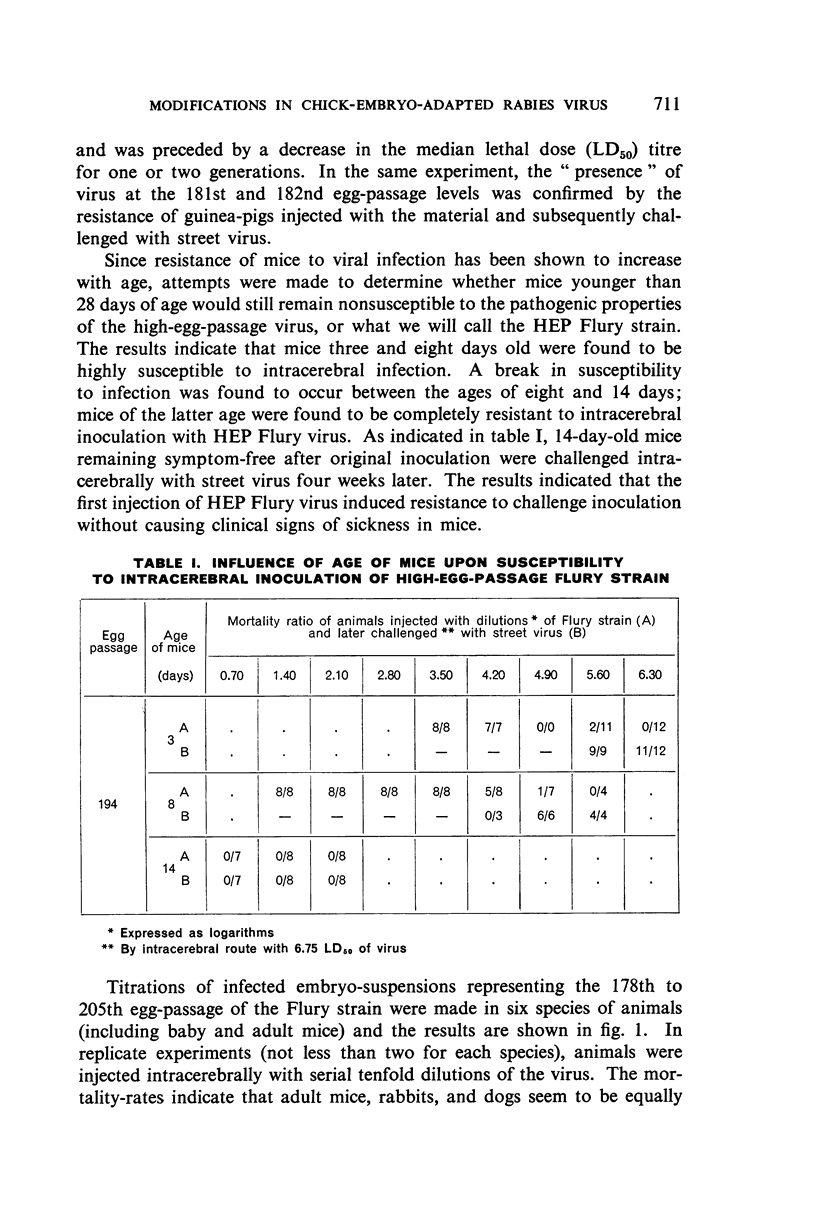
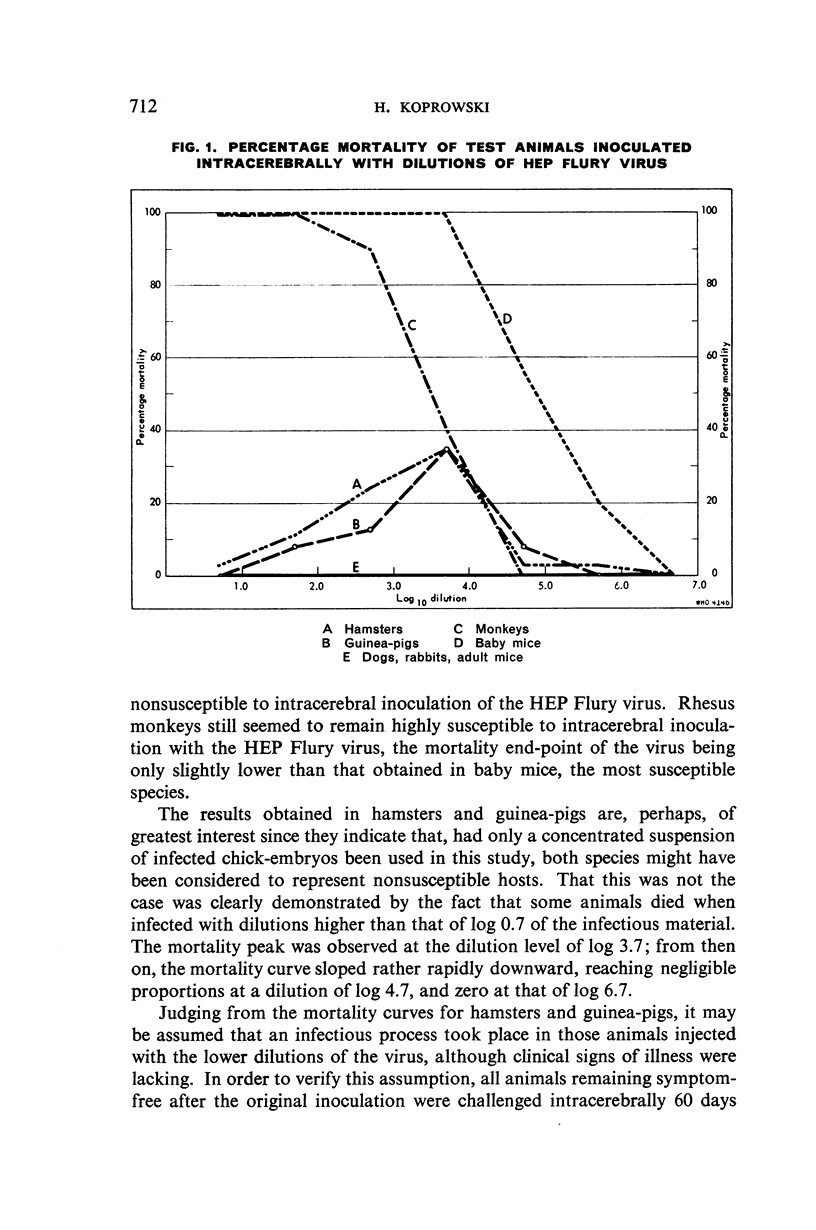
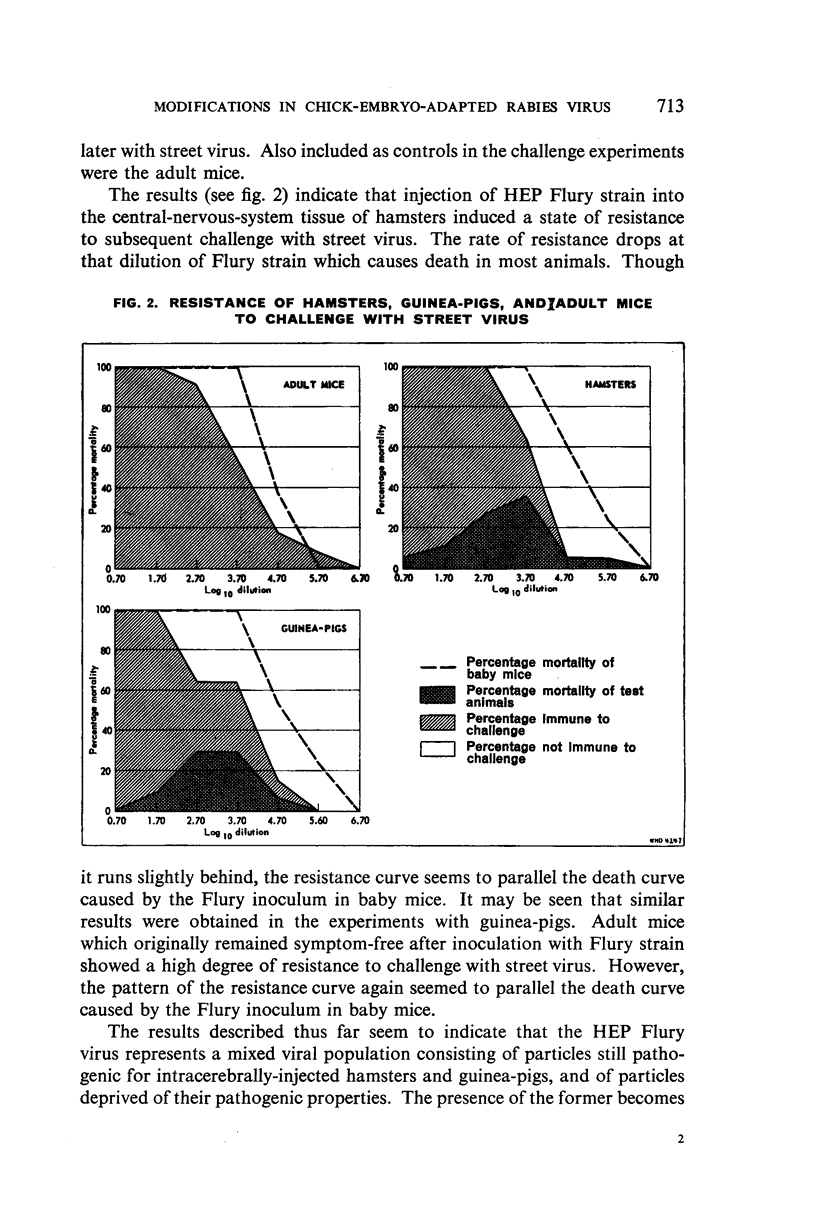
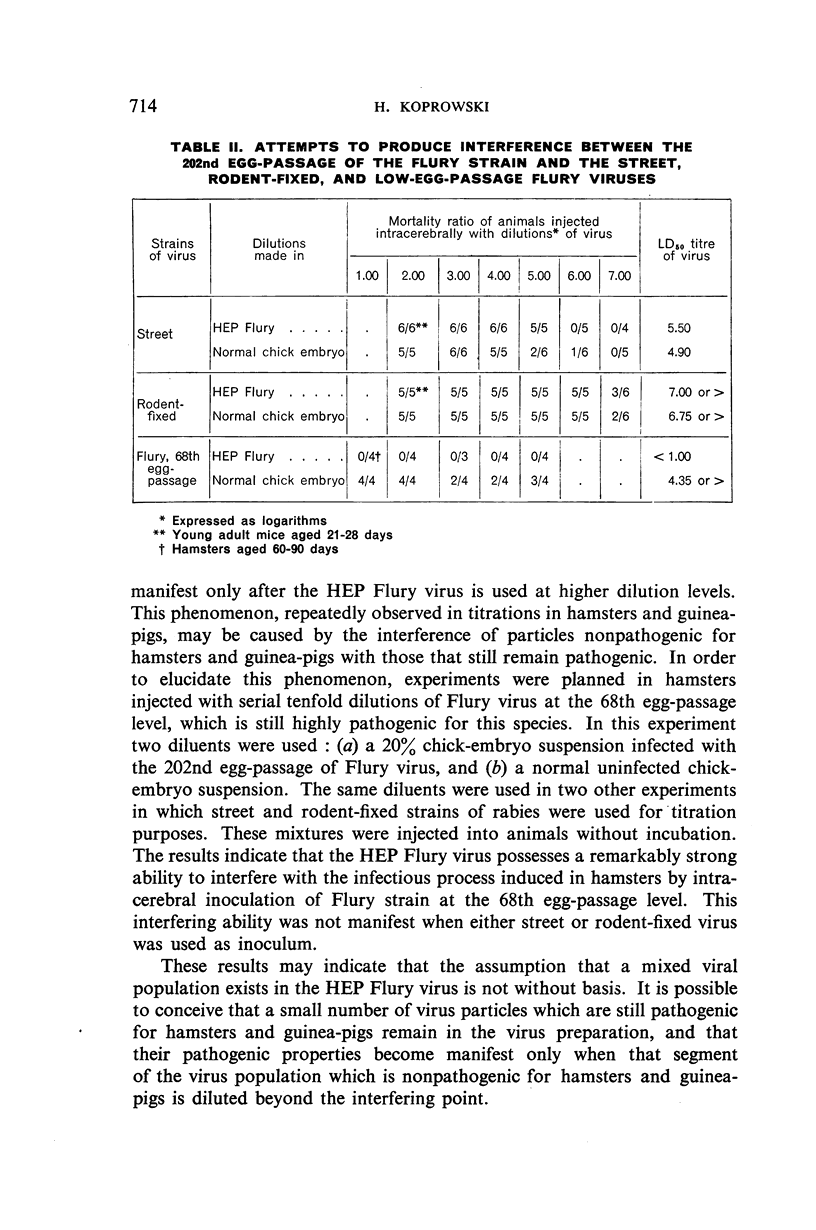

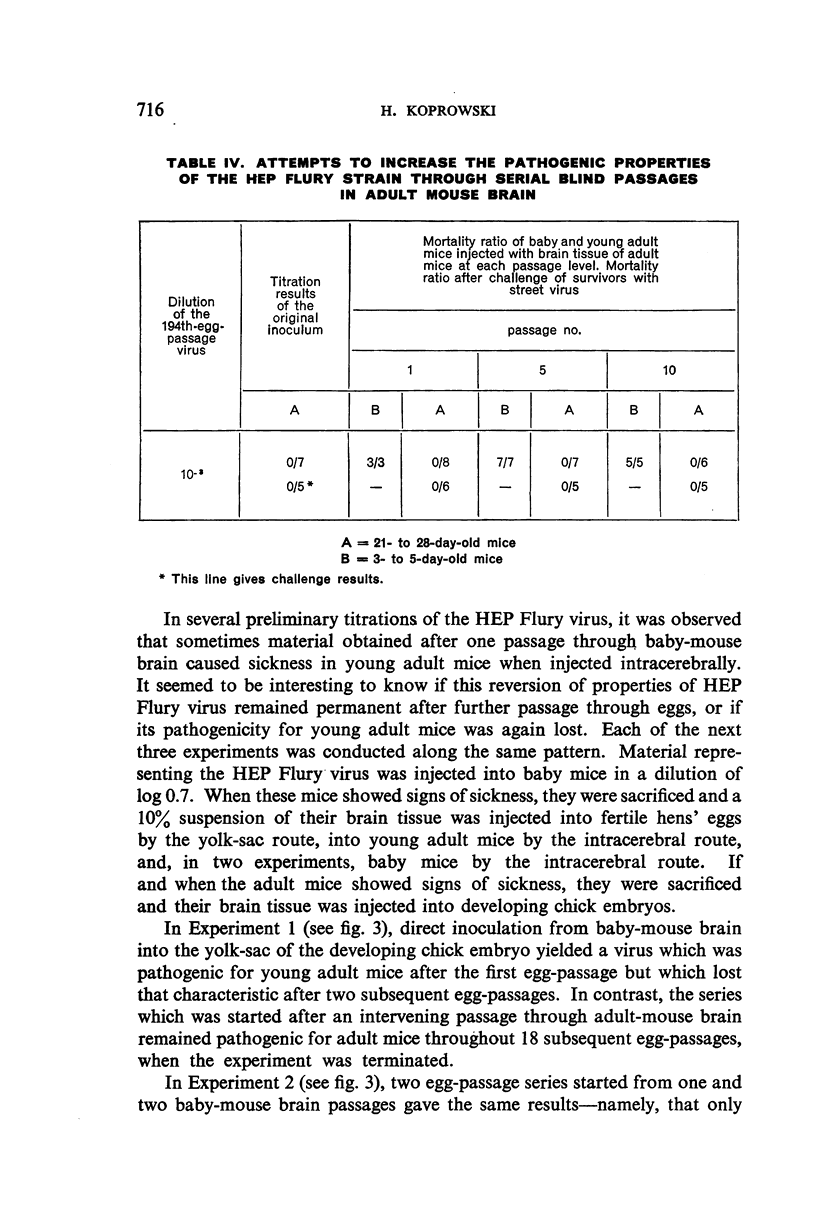
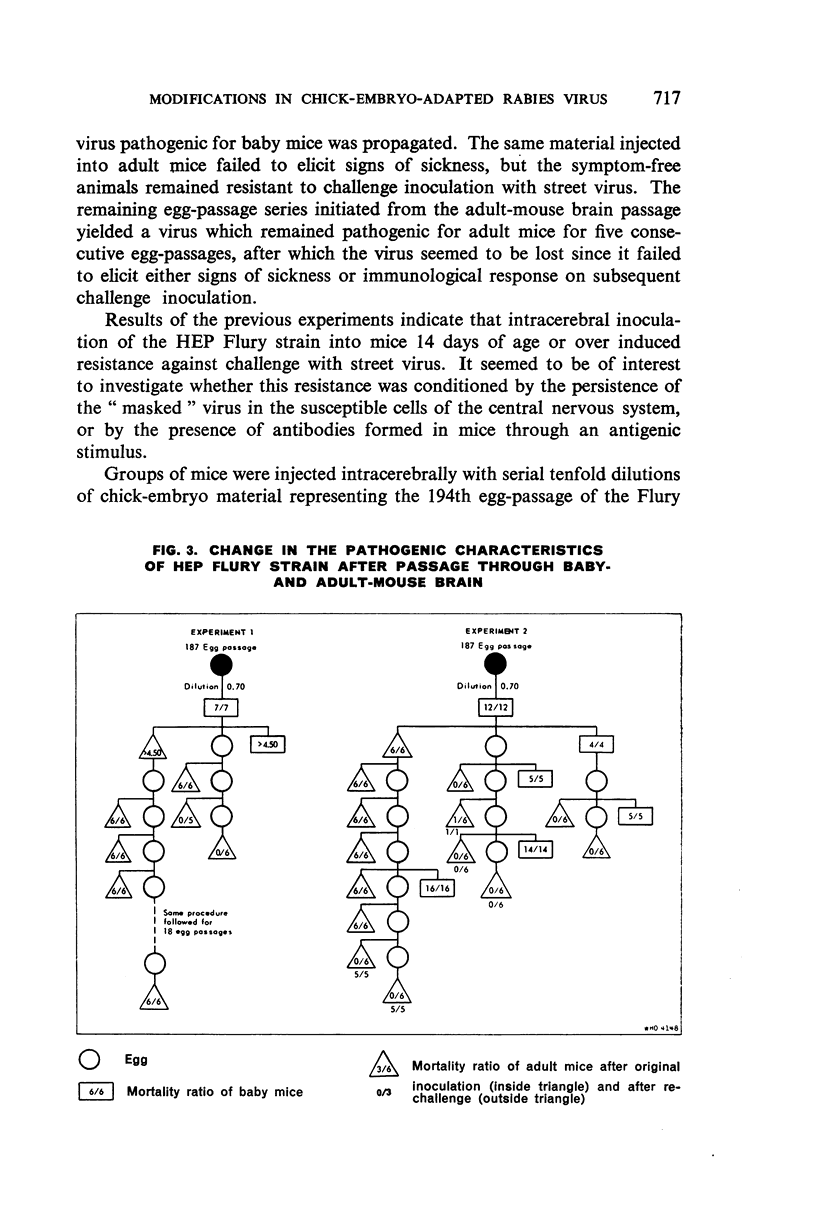
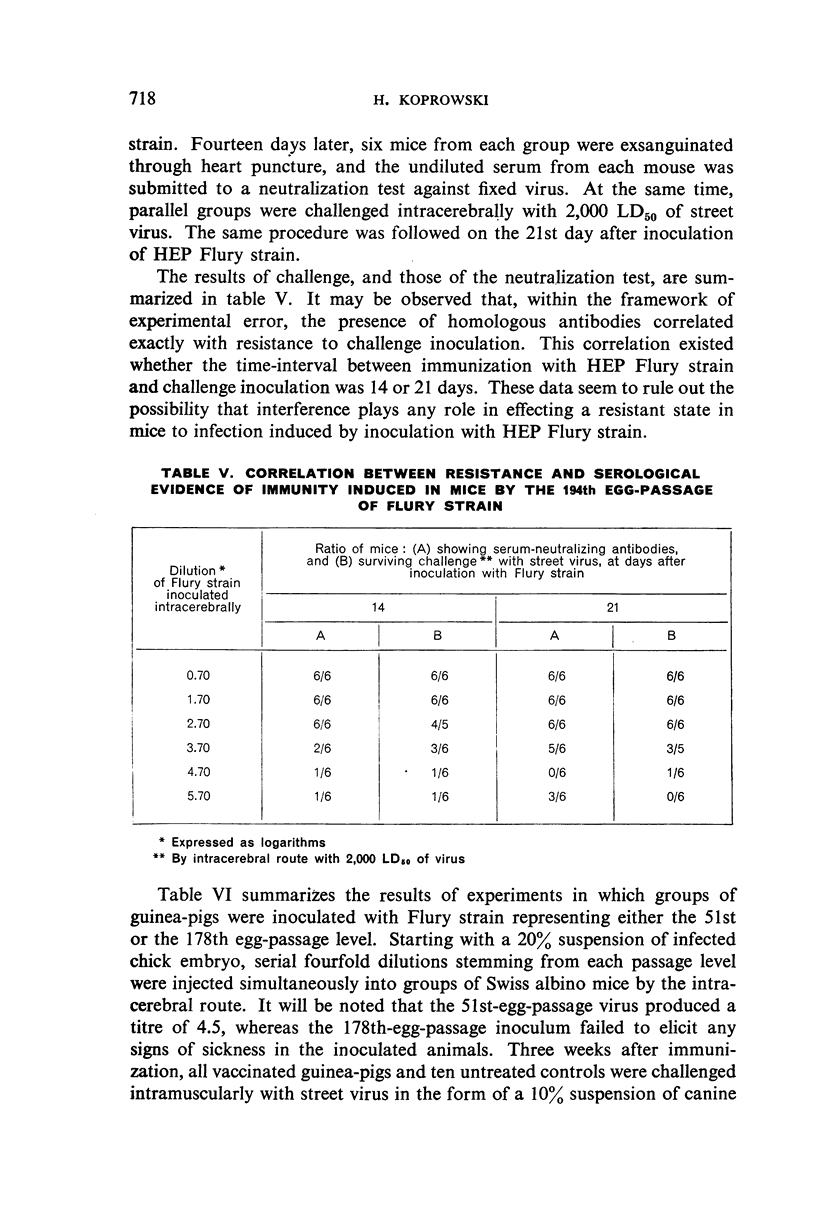
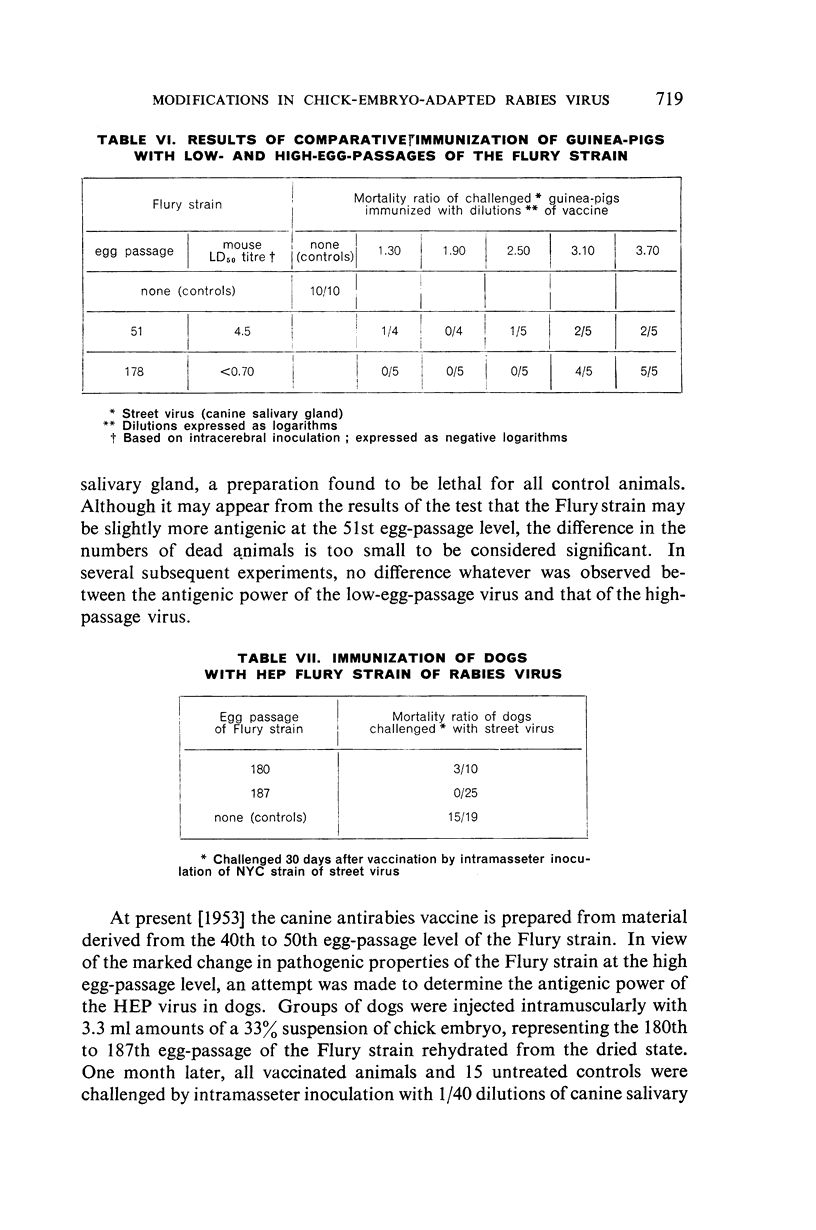

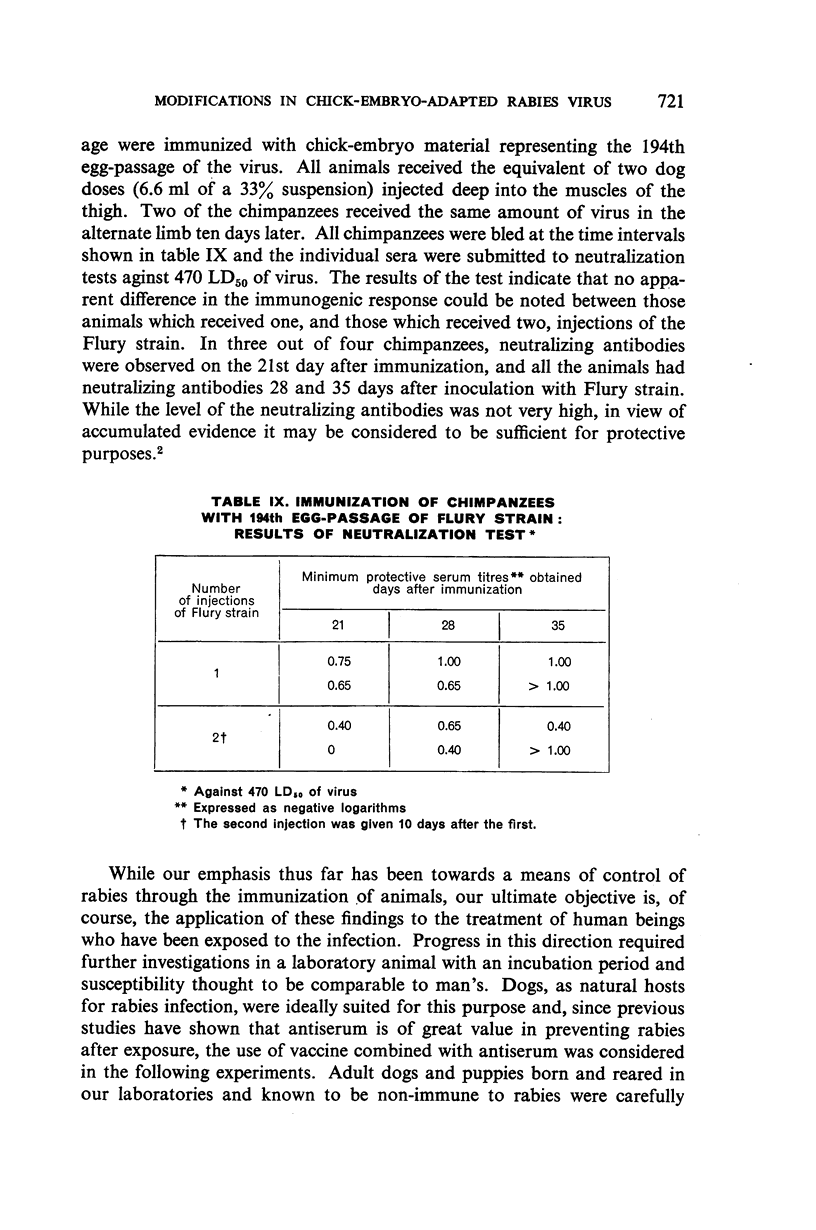
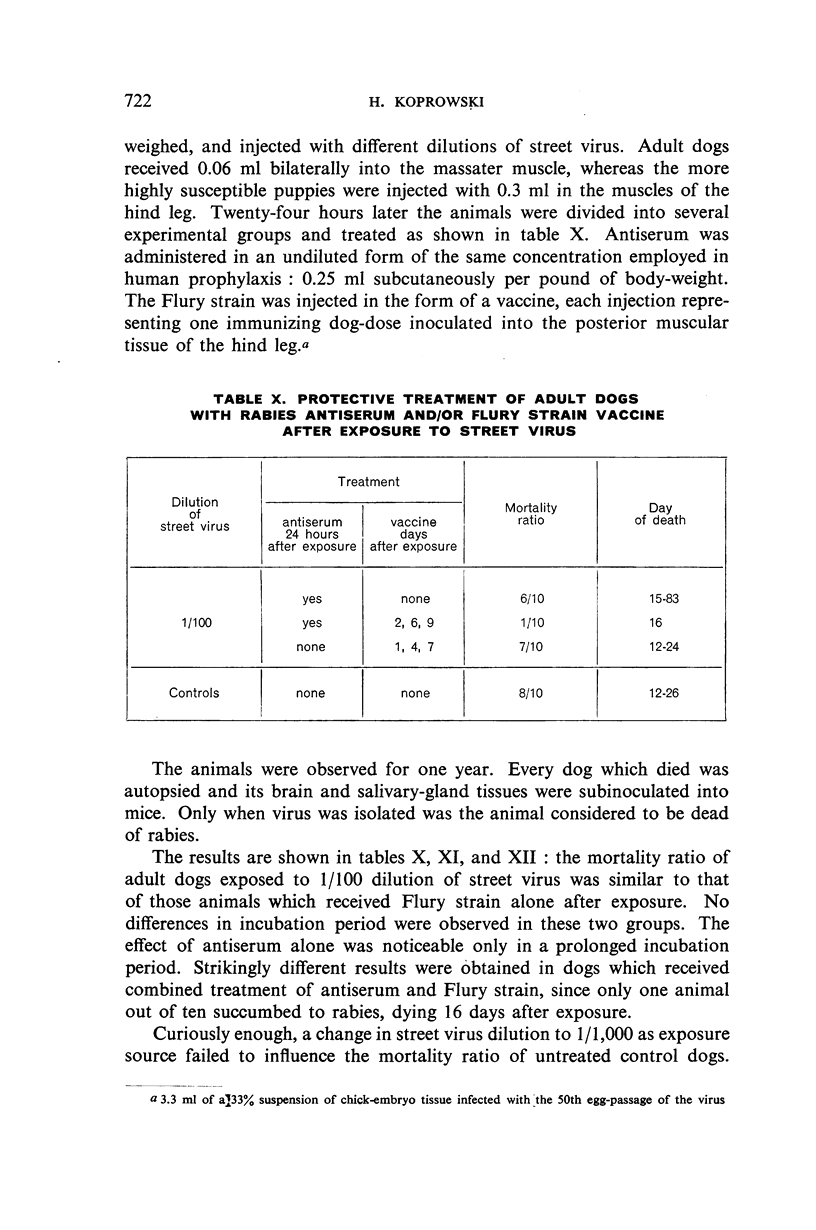
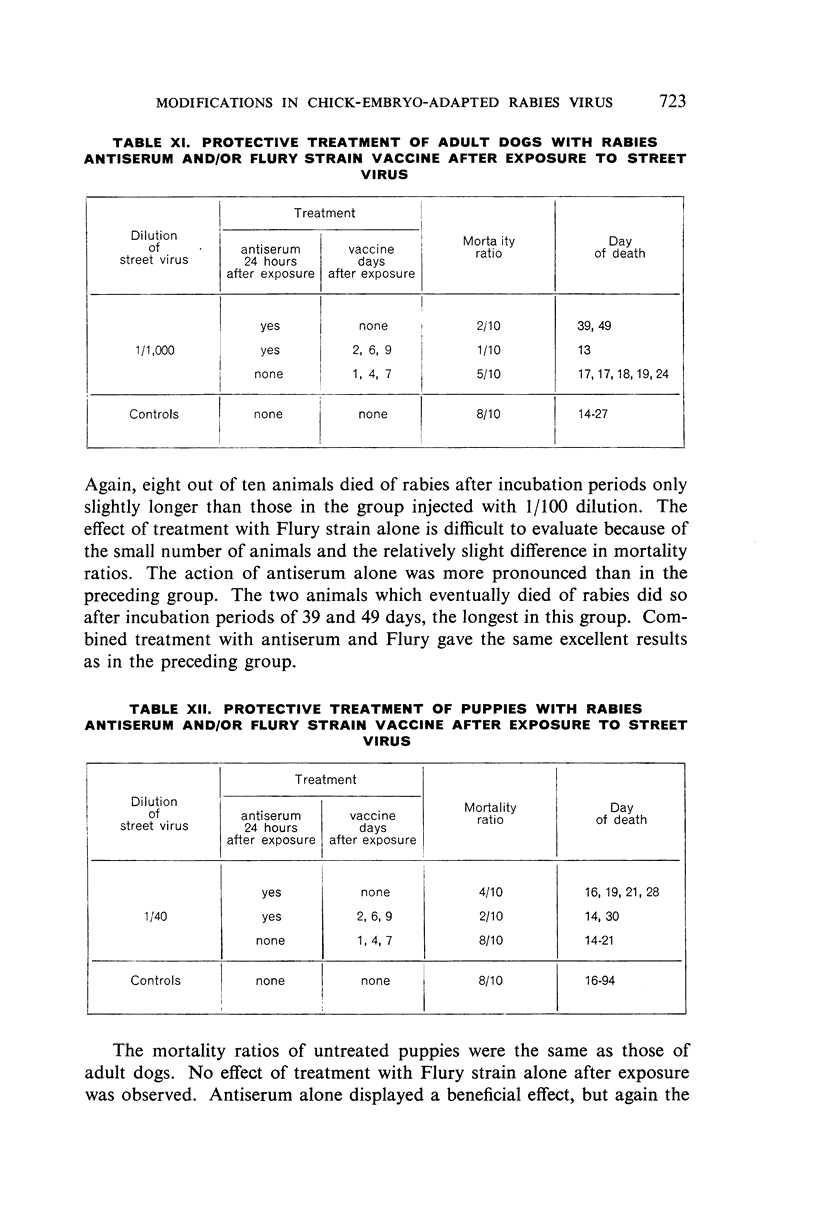
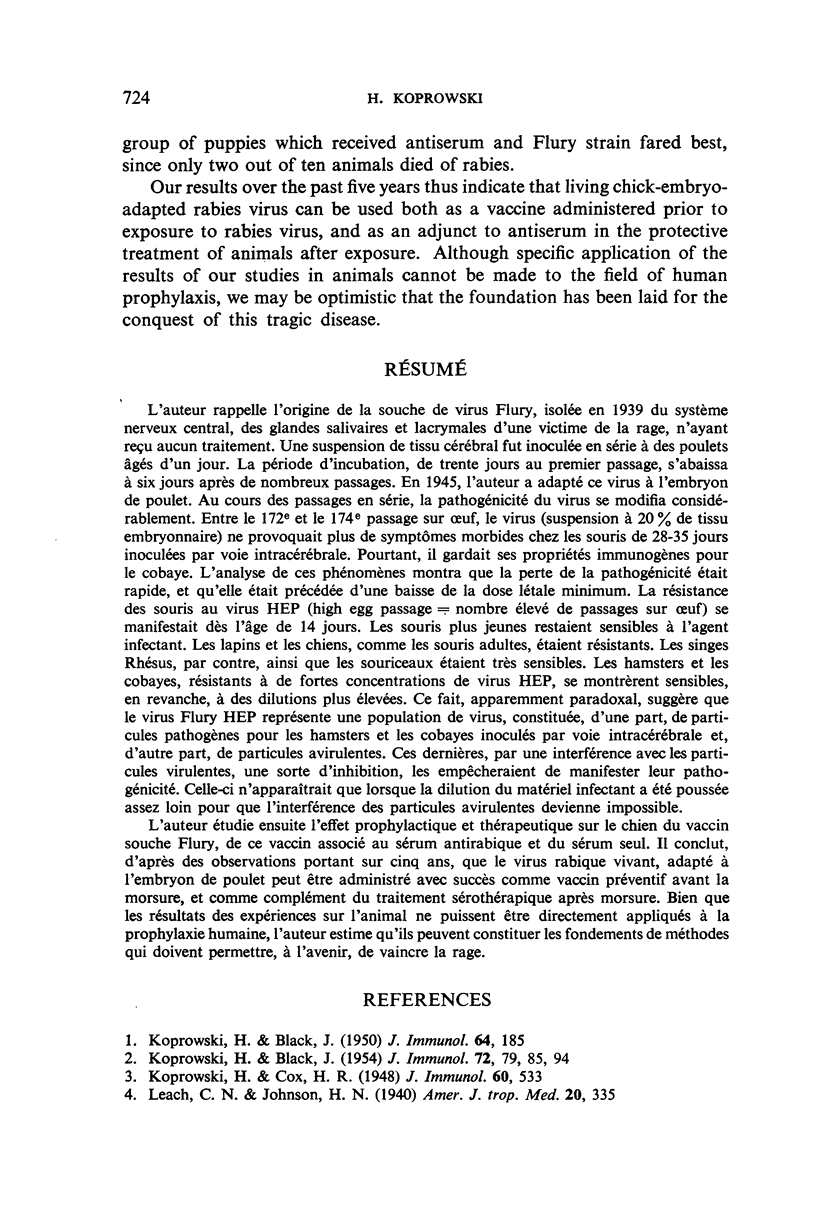
Selected References
These references are in PubMed. This may not be the complete list of references from this article.
- KOPROWSKI H., BLACK J. Studies on chick-embryo adapted rabies virus. II. Pathogenicity for dogs and use of egg-adapted strains for vaccination purposes. J Immunol. 1950 Mar;64(3):185–196. [PubMed] [Google Scholar]
- KOPROWSKI H., COX H. R. Studies on chick embryo adapted rabies virus; culture characteristics and pathogenicity. J Immunol. 1948 Dec;60(4):533–554. [PubMed] [Google Scholar]


